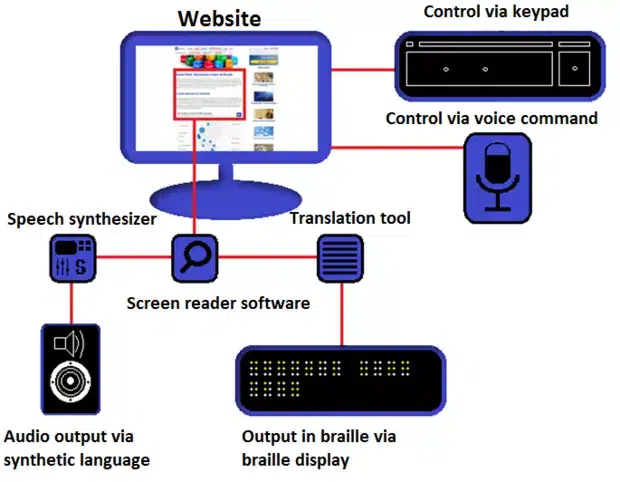In our fast-paced and ever-evolving world, society constantly transforms, driven by shifting cultural norms, technological advancements, and changing perspectives. Software developers recognize the importance of reflecting on societal changes, embracing inclusivity, diversity, and addressing pressing issues. In this blog article, we will explore how software is transforming to reflect society’s changes, shaping a digital environment that aligns with our progressive values and fosters a more inclusive and equitable future.
Software Reflects Changing Gender Norms
One change that you may have noticed in software lately is the adaptation to gender norms. Here are some ways software developers incorporate societal changes into their software.
Diverse Gender Options
One of the most prominent ways software is adapting to reflect changing gender norms is through the inclusion of diverse gender options. Traditionally, software systems have often assumed a binary choice regarding gender, offering only “male” and “female” as options.
However, this limited approach does not account for the experiences and identities of individuals who identify outside of this binary. In response to this limitation, software developers are now incorporating a broader range of gender options, such as non-binary, to provide users with a more inclusive selection.
The good news for The Studio Director software users is that these options are already available to you! On May 10, 2023, The Studio Director updated its software to allow you to manage gender options by adding “Transgender” or “Non-binary” as options. This feature launch is the first phase of an ongoing effort to make our software an inclusive platform. Once a custom gender option is selected, it will be available in student onboarding and will enable you to update current students in student information.
Pronouns
Additionally, software developers are becoming more conscious of the importance of pronoun usage. Gender-specific pronouns like “he” and “she” have long been the default in many languages, including English. However, this exclusive language can inadvertently exclude individuals who do not identify within the traditional gender binary.
To address this, software developers are introducing features that allow users to specify their preferred pronouns and adjust the default language to be more inclusive. This shift ensures that software respects and acknowledges users’ gender identities, fostering a more inclusive and affirming user experience.
Personalization
Moreover, there is a growing emphasis on personalization and customization within software. Developers recognize the importance of allowing users to define their identities and preferences within digital spaces. For example, social media platforms allow users to select their gender identity, choose pronouns, and customize their profile presentation. By allowing individuals to express their identity authentically, the software empowers users and creates spaces that reflect society’s diversity.
Software Adapts to Growing to Diversity
With the internet, the world is more connected than ever before. This means software can be used by more diverse populations than ever before. Here’s how software developers are adapting to support cultural and linguistic diversity.
Cultural Diversity
In today’s interconnected world, catering to users from diverse cultural backgrounds is paramount. Software developers recognize that more than a one-size-fits-all approach is required. By embracing cultural diversity, software can transcend language barriers and foster a sense of inclusivity.
One example of how software developers incorporate cultural diversity into their design is by including diverse representations and cultural elements in user interfaces and graphics. Previously, software interfaces often featured generic, homogenous images that did not reflect the diverse user base. However, developers now recognize the importance of representation and actively incorporate culturally diverse images, icons, and graphics.
Multilingual Support
Language is an integral part of identity, and software developers understand the significance of allowing users to interact with technology in their preferred language. By incorporating multilingual capabilities, software applications become accessible to a broader user base. Whether providing language options during installation or offering real-time translation features, multilingual support enhances the user experience and ensures that language is not a barrier to accessing technology.
Accessibility and Inclusive Design
Again, as more people access software through the internet, developers need to adjust to the various disabilities that people may have. Here’s what they are doing.
Accessibility Features for Users with Disabilities
Recognizing the importance of equal access to technology, software developers are incorporating accessibility features to ensure that individuals with disabilities can fully engage with software applications. This includes features such as screen readers, which enable visually impaired users to navigate and interact with software using text-to-speech technology.

Image courtesy https://www.ionos.com/digitalguide/websites/web-development/screenreader/
Additionally, keyboard navigation options are implemented to provide an alternative for individuals with mobility impairments who cannot use traditional pointing devices. These accessibility features empower individuals with disabilities to overcome barriers and participate fully in the digital realm.
Inclusive Design
Inclusive design principles are pivotal in shaping software that provides equal opportunities for all users. Instead of retroactively adding accessibility features, developers are integrating inclusive design from the outset of the software development process. This approach ensures that the needs and experiences of a diverse user base, including individuals with disabilities, are considered from the beginning.

Image courtesy: https://www.smashingmagazine.com/2017/10/nailing-accessibility-design/
Inclusive design principles encompass a range of considerations, such as providing alternative text for images, using color schemes that are accessible for individuals with visual impairments, and designing user interfaces that are intuitive and easy to navigate. By promoting inclusive design, software developers are working towards a digital landscape that is accessible, equitable, and inclusive for users of all abilities.
Environmental Sustainability
As society becomes increasingly interested in environmental sustainability, so do software developers. Here are some changes they are making to reflect society’s interest in green technology.
Eco-Friendly Practices
As the global focus on environmental sustainability intensifies, software developers are embracing eco-friendly practices in their development processes. One of the key areas of emphasis is energy optimization and carbon footprint reduction. Developers are implementing strategies to minimize the energy consumption of software applications, optimize algorithms, and reduce computational power requirements. By doing so, software can contribute to a more sustainable digital ecosystem by conserving energy resources and reducing greenhouse gas emissions.
Collaborative and Remote Work
The rise of remote work and the need for collaborative tools have influenced software development. Applications and platforms that enable remote communication, virtual collaboration, and project management have become essential for businesses and individuals. For instance, project management software such as Trello, Asana, and Monday.com provide a centralized platform where team members can collaborate on tasks, track progress, and communicate in real-time.
These tools allow for the sharing of project timelines, assigning tasks to specific team members, and providing updates on the status of each task. By providing a digital space for collaboration, these tools eliminate the need for physical meetings and enable teams to work together efficiently and effectively, even if they are geographically dispersed.
Data Privacy and Security
With the rise of remote work, society’s concerns around data privacy and security have also increased, leading to significant changes in software development. For example, developers are implementing robust encryption methods, strengthening authentication processes, and giving users greater control over their personal data.
In addition, privacy-focused features, such as opt-in consent and transparent data handling practices, are becoming standard in software applications to address society’s demand for privacy protection.
The Bottom Line
Software is and will always undergo significant transformations to reflect societal changes. Currently, software developers are actively working to create a digital environment that is inclusive, accessible, and responsive to the diverse needs of users by doing things such as expanding gender options and inclusive pronoun usage to embrace cultural diversity and multilingual support.
However, as technology advances and society continues to evolve, software will undoubtedly adapt to meet new challenges and embrace emerging needs. Through ongoing collaboration, innovation, and a commitment to user-centered design, software developers can shape a future where software serves as a tool that helps solve society’s pressing dilemmas while reflecting society’s biggest changes.


